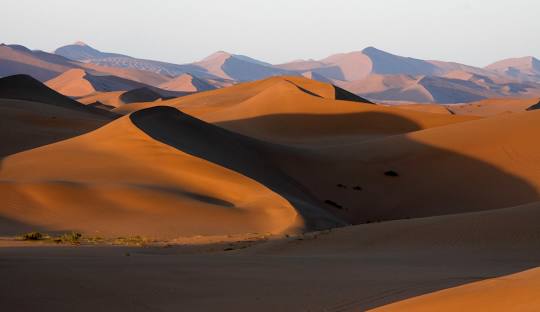Gobi Desert, Mongolia
✧ Gobi Desert, Mongolia: A Majestic Journey Through the Land of Sand Dunes, Fossils, and Nomadic Culture ✧
➤ ✧ Introduction: The Vast and Mysterious Gobi Desert
The Gobi Desert, one of the largest deserts in the world, is located in the southern part of Mongolia and northern China. Despite its arid and harsh landscape, the Gobi is home to unique wildlife, ancient fossils, and the enduring spirit of Mongolian nomadic culture. With its expansive sand dunes, rugged mountains, and striking rock formations, the Gobi Desert offers an experience unlike anywhere else on Earth. It’s an adventurer’s dream and a photographer’s paradise.
➤ ✧ How to Reach the Gobi Desert
The Gobi Desert is remote, but access is fairly straightforward from Ulaanbaatar, the capital of Mongolia.
-
By Plane: You can fly from Ulaanbaatar to the Dalanzadgad airport, the gateway to the southern Gobi Desert region.
-
By Car/Jeep: A popular and adventurous option is to travel by 4x4 vehicle from Ulaanbaatar, which can take about 8 to 10 hours to reach the Gobi.
-
By Camel: For the truly adventurous, some tour operators offer camel treks into the desert, though it can be challenging due to the harsh environment.
➤ ✧ Must-See Attractions in the Gobi Desert
-
Khongoryn Els (Singing Sand Dunes): The largest and most famous sand dunes in the Gobi, stretching over 180 kilometers. These dunes are known for their eerie "singing" sound as the wind blows across them.
-
Yoliin Am (Vulture’s Mouth Canyon): A dramatic and narrow gorge with stunning rock formations and a small ice river that lasts through the summer months.
-
Bayanzag (Flaming Cliffs): Famous for its red sandstone cliffs and as the site of significant dinosaur fossil discoveries. The cliffs glow in the sunset, giving them the appearance of flaming rocks.
-
Khustain Nuruu National Park: Home to the reintroduced Przewalski’s horse, the last truly wild horse species in the world. Visitors can trek through the park to see these magnificent creatures in the wild.
-
Ongi Monastery: Ruins of a once-major Buddhist monastery, offering a glimpse into Mongolia’s spiritual history and stunning views over the desert landscape.
➤ ✧ Adventure and Activities in the Gobi Desert
-
Camel Trekking: One of the most popular activities, camel trekking in the Gobi provides an authentic desert experience as you ride through the expansive dunes and sleep under the stars.
-
Hiking and Exploration: There are many opportunities to hike in the desert's unique landscapes, exploring canyons, rock formations, and hidden oases.
-
Wildlife Watching: Keep an eye out for Bactrian camels, wild asses, snow leopards, and eagles. The Gobi is rich in wildlife, and many tours will include a chance to see these creatures in their natural habitat.
➤ ✧ The Nomadic Culture of the Gobi Desert
One of the most fascinating aspects of the Gobi Desert is its nomadic lifestyle. The people of the Gobi are herders who move from place to place with their livestock, living in gers (traditional Mongolian tents).
-
Visit a Nomadic Family: Spending a night with a nomadic family in the desert is a unique cultural experience, where you can learn about their way of life, try traditional Mongolian food, and experience their hospitality.
-
Mongolian Ger Stay: Staying in a ger gives you an authentic experience of desert life and offers a cozy shelter from the harsh desert conditions.
➤ ✧ Best Time to Visit the Gobi Desert
-
Summer (June to August): The best time to visit the Gobi Desert is during the summer months when the weather is warmer and more bearable, with temperatures ranging from 25°C to 35°C (77°F to 95°F). This is also the peak travel season, ideal for camel trekking and desert exploration.
-
Spring and Autumn (April to May, September to October): These shoulder seasons offer cooler temperatures, but be prepared for strong winds. These months can be ideal for avoiding crowds.
-
Winter (November to March): The Gobi Desert is incredibly cold during winter, with temperatures often dropping below -20°C (-4°F). Winter is not the best time for travel unless you are prepared for extreme cold and want to experience the desert’s snow-covered beauty.
➤ ✧ Where to Stay in the Gobi Desert
-
Luxury: There are a few luxury eco-lodges and desert camps offering modern comforts like showers, comfortable beds, and stunning desert views.
-
Mid-Range: Gobi Desert guesthouses and ger camps provide a more traditional and rustic experience with the option for full board.
-
Budget: For those on a tighter budget, simple ger camps run by local nomadic families offer the opportunity to experience desert life firsthand at an affordable price.
➤ ✧ Practical Tips for Visiting the Gobi Desert
✔ Pack for all weather: The Gobi Desert experiences extreme temperature changes, so bring layers to accommodate the hot days and cold nights.
✔ Stay hydrated: The desert climate can be very dry, so carry plenty of water and snacks during your travels.
✔ Respect local customs: The people of the Gobi are very hospitable, so it’s important to show respect for their traditions and way of life.
✔ Bring cash: While larger towns may have ATMs, many areas of the Gobi Desert have limited banking services, so it's best to carry cash.
➤ ✧ Final Thought: A Journey Like No Other
The Gobi Desert is a land of extremes—breathtaking landscapes, ancient fossils, nomadic culture, and unforgettable adventures. Whether you're trekking across the famous sand dunes, exploring ancient ruins, or spending time with nomadic families, the Gobi offers a unique and rugged beauty that stays with you long after you’ve left.


